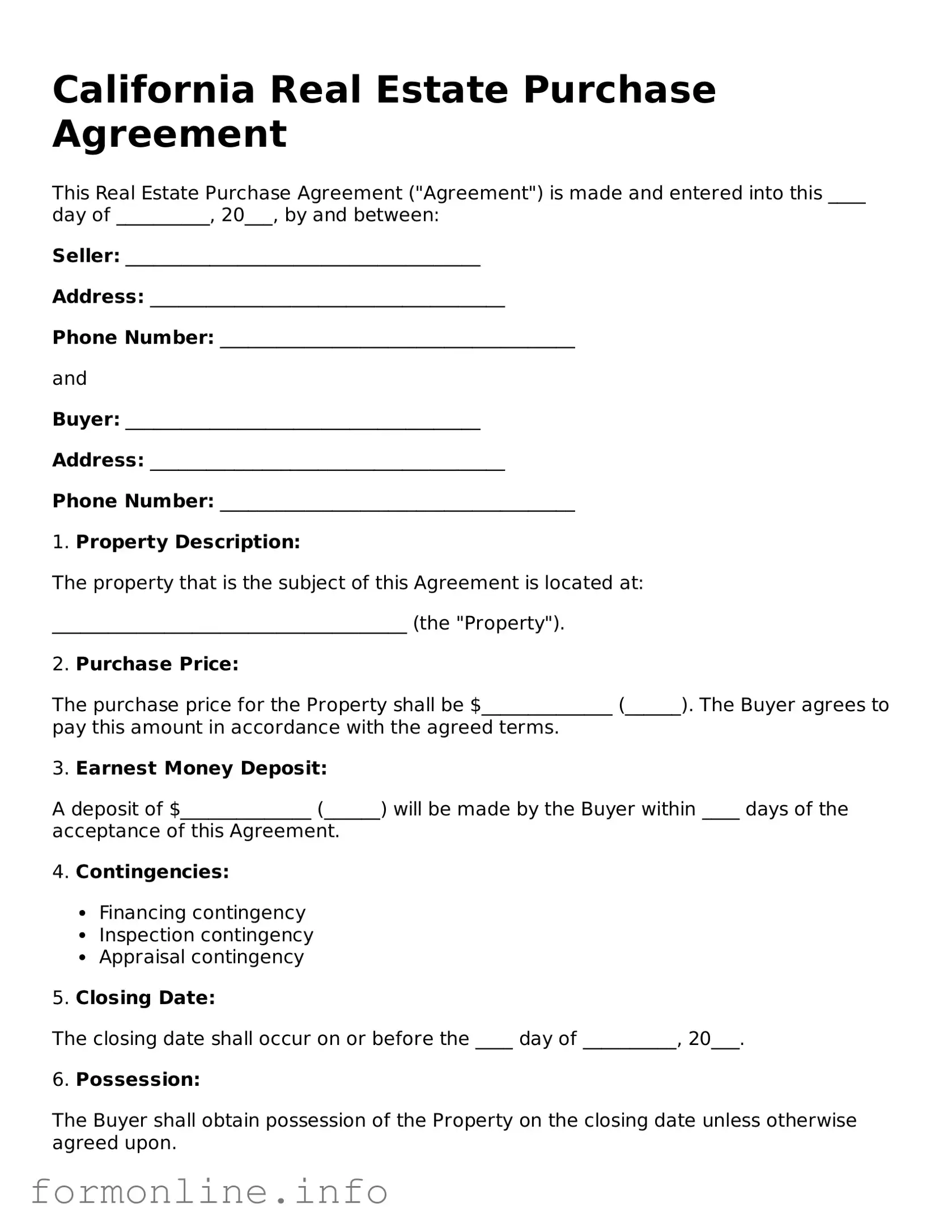California Real Estate Purchase Agreement
This Real Estate Purchase Agreement ("Agreement") is made and entered into this ____ day of __________, 20___, by and between:
Seller: ______________________________________
Address: ______________________________________
Phone Number: ______________________________________
and
Buyer: ______________________________________
Address: ______________________________________
Phone Number: ______________________________________
1. Property Description:
The property that is the subject of this Agreement is located at:
______________________________________ (the "Property").
2. Purchase Price:
The purchase price for the Property shall be $______________ (______). The Buyer agrees to pay this amount in accordance with the agreed terms.
3. Earnest Money Deposit:
A deposit of $______________ (______) will be made by the Buyer within ____ days of the acceptance of this Agreement.
4. Contingencies:
- Financing contingency
- Inspection contingency
- Appraisal contingency
5. Closing Date:
The closing date shall occur on or before the ____ day of __________, 20___.
6. Possession:
The Buyer shall obtain possession of the Property on the closing date unless otherwise agreed upon.
7. Disclosure:
The Seller agrees to provide the Buyer with all required disclosures, including but not limited to:
- Disclosure regarding the condition of the Property
- Lead-based paint disclosure (if applicable)
- Natural hazard disclosures
8. Governing Law:
This Agreement shall be governed by and construed in accordance with the laws of the State of California.
9. Entire Agreement:
This document constitutes the entire Agreement between the parties and supersedes any prior understandings or agreements, written or oral.
IN WITNESS WHEREOF, the parties hereto have executed this Agreement as of the date first above written.
Seller Signature: _______________________________ Date: _____________
Buyer Signature: _______________________________ Date: _____________
